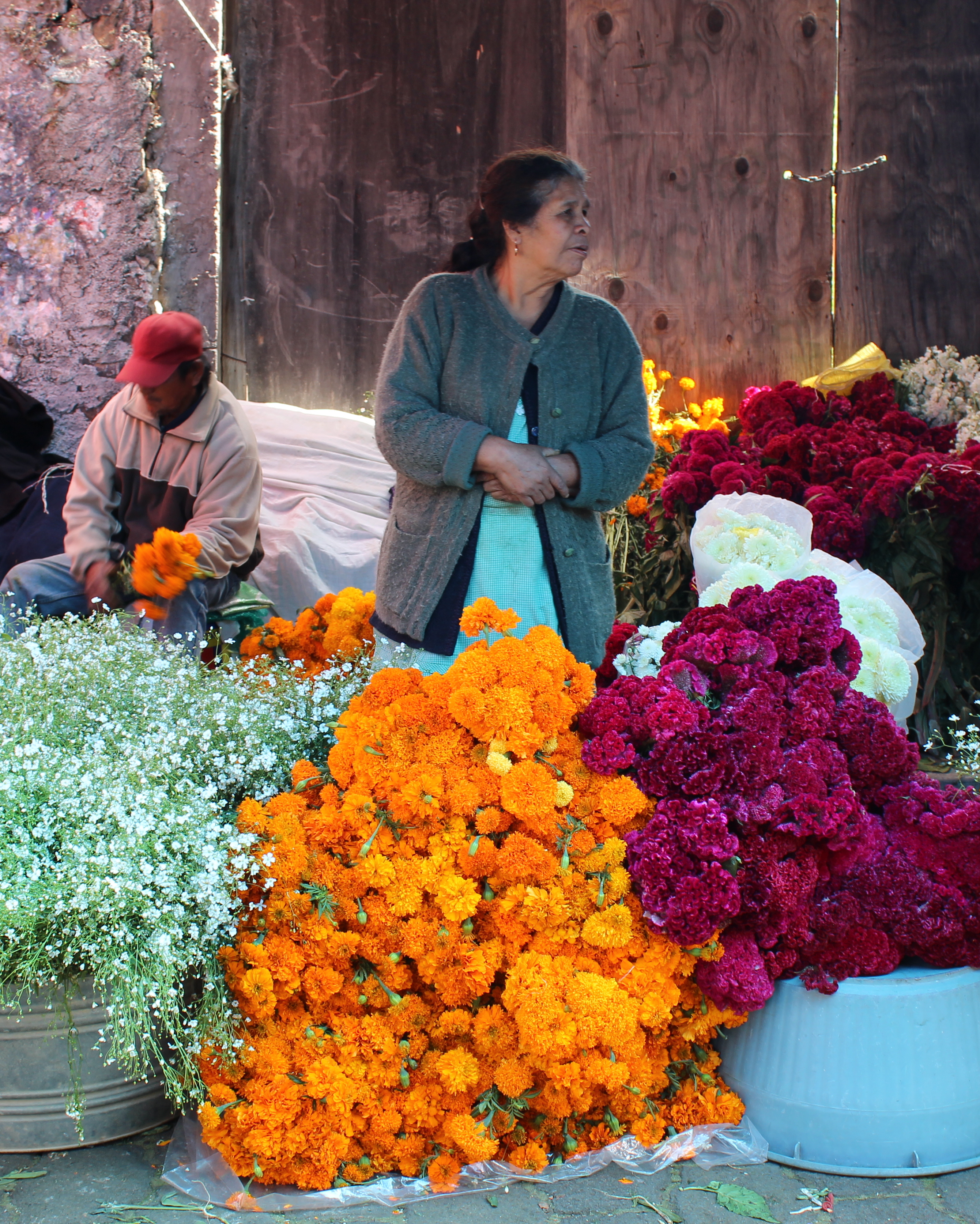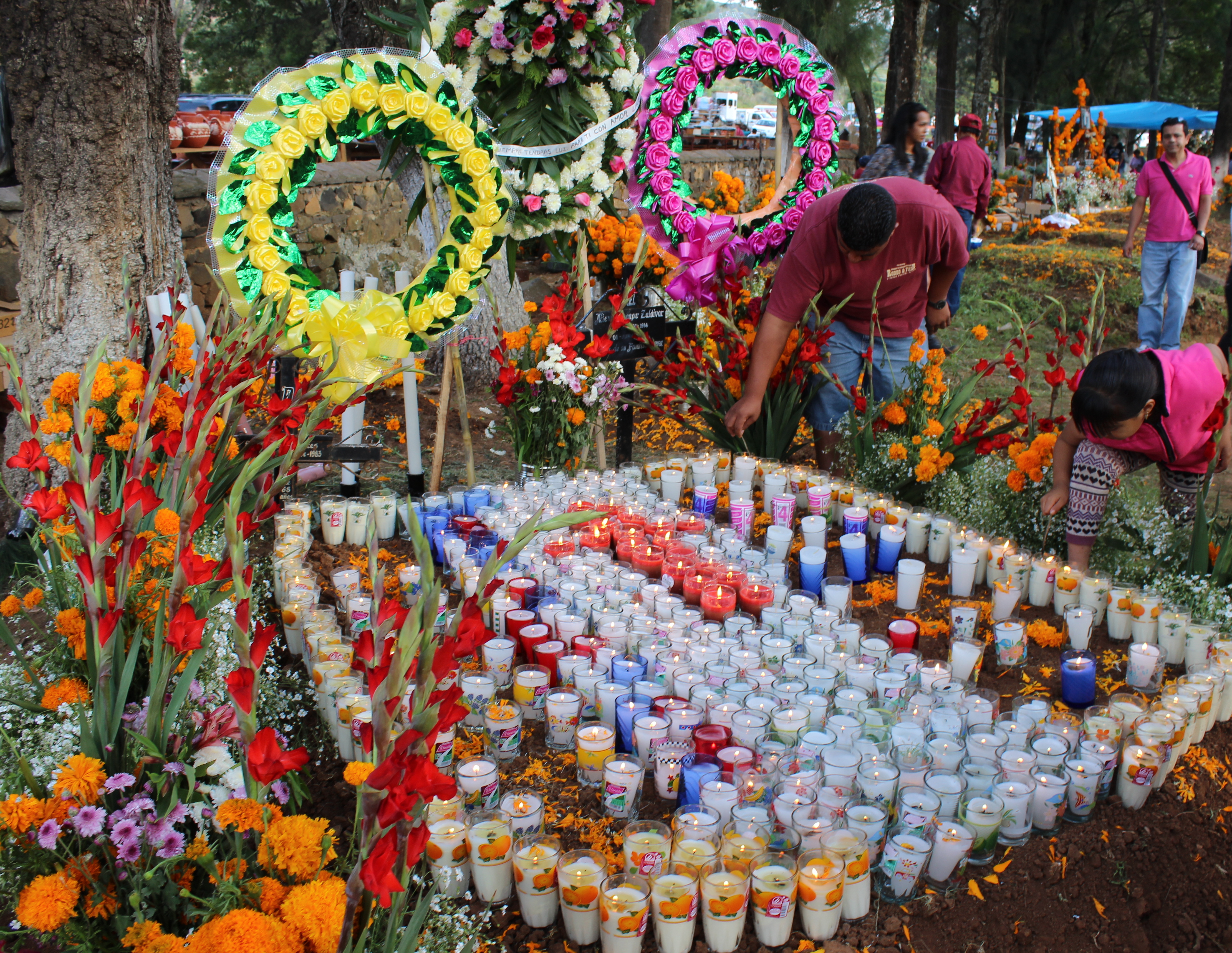“My grandparents will be here soon! Can’t wait to see them 💜🕯️🌸”
It was late October and I was living in Mexico City when I read a workmate’s excited Facebook post about an upcoming family visit. Over lunch the next day, I asked if her relatives lived far away and when they were arriving. She laughed and told me, “I was talking about Day of the Dead.”

I’d already experienced Día de Muertos during my first year in Mexico. I’d seen the colourful paper decorations and sugar skulls, joined the office celebrations and visited the giant ofrendas at the university campus. I thought I knew what the day was all about. But this was something totally unexpected.
It sounds strange to say about a festival centred around death, but I had no idea it was taken quite so seriously. I knew this was a time to remember the dead through happy memories of their lives. What I hadn’t realised is that people truly believe their lost loved ones return for the day.

That conversation in the work canteen helped me see Day of the Dead in a whole new light – one I wrote about here a few years later. I was absolutely captivated by the thought that, by gathering together and remembering someone in the most joyful and vivid manner, you were bringing them back to life in a way.
This newfound understanding was put to the test in 2019, when I made my first real ofrenda. It wasn’t much of an offering. I wasn’t even sure I should be doing it, but I couldn’t get the idea out of my mind. I’d lost two beloved grandparents that year, one of them just a few weeks earlier, and this seemed like a symbolic way to externalise my grief.

I hesitated until the last minute before finally deciding to go for it. I dug out some old family photos, candles and a few Mexican ceramics, and bought some cheap flowers on my way home from work. If nothing else, I thought the time spent putting it together would be time spent remembering my loved ones.
But somehow once I’d thrown it all together on a small table in the hallway, I was filled with warmth and joy. Every time I passed, I basked in the glowing lights and sweet scent, and saw my grandparents’ faces smiling back at me. It was a space to celebrate them and their love, to invite them into my home in another country and to honour their memory. In short, it meant a lot more than I ever expected.

The following year I didn’t hesitate. After the isolation of 2020, the idea of surrounding myself with so much beauty and love was irresistable. This time my ofrenda took pride of place on the bookcase in my living room. I’d stocked up on paper decorations on my last trip to Mexico, and managed to order sugar skulls and pan de muerto from a local Mexican baker.
Alongside the traditional candles, salt, water and bunches of flowers, I added a bottle of Irish whiskey, my grandma’s ring, a birdwatching book my grandad gave me. Tiny glimpses of their life on earth.

Looking at the warm smiles and shining eyes in their photos, I had a sudden moment of realisation. I was the one who took those photos in the first place – so they really were smiling at me. This little moment of magic was the final touch I needed to fully understand what this day means.

We spent 2nd November together. Alone in my house, I talked to them, took comfort in happy memories and made my peace with not having been there in their final hours. That evening, I raised a glass to them all and said goodbye until the next year.
Now once again it’s late October, my grandparents will be here soon and I can’t wait to see them.











